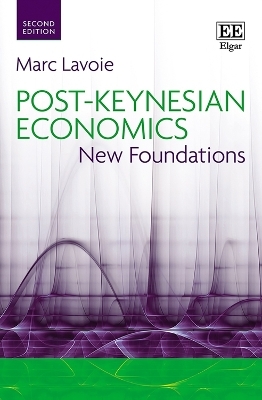
How Global Currencies Work
Past, Present, and Future
Seiten
2019
Princeton University Press (Verlag)
978-0-691-19186-7 (ISBN)
Princeton University Press (Verlag)
978-0-691-19186-7 (ISBN)
A powerful new understanding of global currency trends, including the rise of the Chinese yuanAt first glance, the history of the modern global economy seems to support the long-held view that the currency of the world's leading power invariably dominates international trade and finance. But in How Global Currencies Work, three noted economists
A powerful new understanding of global currency trends, including the rise of the Chinese yuan
At first glance, the history of the modern global economy seems to support the long-held view that the currency of the world’s leading power invariably dominates international trade and finance. But in How Global Currencies Work, three noted economists overturn this conventional wisdom. Offering a new history of global finance over the past two centuries and marshaling extensive new data to test current theories of how global currencies work, the authors show that several national monies can share international currency status—and that their importance can change rapidly. They demonstrate how changes in technology and international trade and finance have reshaped the landscape of international currencies so that several international financial standards can coexist. In fact, they show that multiple international and reserve currencies have coexisted in the past—upending the traditional view of the British pound’s dominance before 1945 and the U.S. dollar’s postwar dominance. Looking forward, the book tackles the implications of this new framework for major questions facing the future of the international monetary system, including how increased currency competition might affect global financial stability.
A powerful new understanding of global currency trends, including the rise of the Chinese yuan
At first glance, the history of the modern global economy seems to support the long-held view that the currency of the world’s leading power invariably dominates international trade and finance. But in How Global Currencies Work, three noted economists overturn this conventional wisdom. Offering a new history of global finance over the past two centuries and marshaling extensive new data to test current theories of how global currencies work, the authors show that several national monies can share international currency status—and that their importance can change rapidly. They demonstrate how changes in technology and international trade and finance have reshaped the landscape of international currencies so that several international financial standards can coexist. In fact, they show that multiple international and reserve currencies have coexisted in the past—upending the traditional view of the British pound’s dominance before 1945 and the U.S. dollar’s postwar dominance. Looking forward, the book tackles the implications of this new framework for major questions facing the future of the international monetary system, including how increased currency competition might affect global financial stability.
Barry Eichengreen is the George C. Pardee and Helen N. Pardee Professor of Economics and Political Science at the University of California, Berkeley. Arnaud Mehl is principal economist at the European Central Bank. Livia Chiţu is an economist at the European Central Bank.
| Erscheinungsdatum | 27.02.2019 |
|---|---|
| Zusatzinfo | 38 b/w illus. 18 tables. |
| Verlagsort | New Jersey |
| Sprache | englisch |
| Maße | 156 x 235 mm |
| Themenwelt | Wirtschaft ► Allgemeines / Lexika |
| Wirtschaft ► Volkswirtschaftslehre ► Finanzwissenschaft | |
| Wirtschaft ► Volkswirtschaftslehre ► Makroökonomie | |
| ISBN-10 | 0-691-19186-7 / 0691191867 |
| ISBN-13 | 978-0-691-19186-7 / 9780691191867 |
| Zustand | Neuware |
| Informationen gemäß Produktsicherheitsverordnung (GPSR) | |
| Haben Sie eine Frage zum Produkt? |
Mehr entdecken
aus dem Bereich
aus dem Bereich
eine Einführung in die Staatsfinanzen
Buch | Hardcover (2024)
Vahlen (Verlag)
39,80 €
New Foundations
Buch | Softcover (2022)
Edward Elgar Publishing Ltd (Verlag)
64,75 €
and why it doesn't work the way we think it does
Buch | Softcover (2023)
Pan Books (Verlag)
13,70 €


